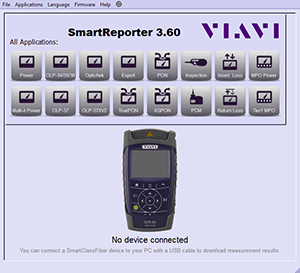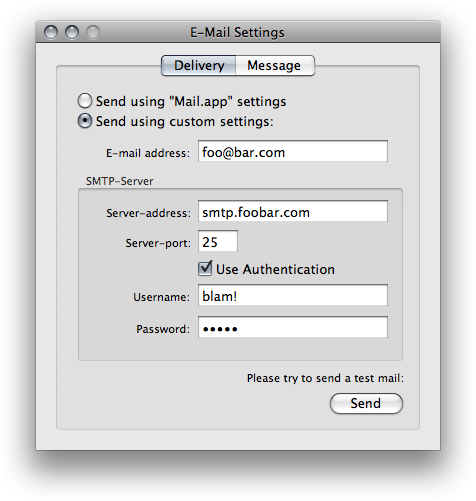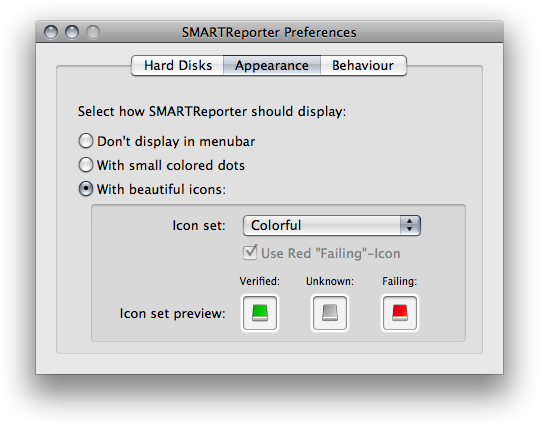

- #Smartreporter gsmartcontrol serial#
- #Smartreporter gsmartcontrol portable#
- #Smartreporter gsmartcontrol Pc#
- #Smartreporter gsmartcontrol plus#
- #Smartreporter gsmartcontrol free#
#Smartreporter gsmartcontrol portable#
HDDScan is portable - there’s no formal installation - and its limited help is on the home page. The extended test is, as you might expect, more thorough, but it can take hours to complete. The short test is ideal when you want to run a quick check of a drive’s performance. For example, clicking TOOLS/DRIVE ID displays a wealth of details about the drives it finds - including interface type, sector size, and level of Direct Memory Access (DMA) support.Ĭlicking TOOLS/SMART TESTS gives you access to three additional tests: Short, Extended, and Conveyance (which checks for “transportation issues”). HDDScan can also reveal additional information about drives in the TOOLS section (see Figure 3).
#Smartreporter gsmartcontrol plus#
HDDScan includes its own set of drive-health tests - plus drive-wiping. Obviously, you’d select the ERASE option only if you want to scrub everything from a drive.įigure 2. You can queue up one test after another and then just let them run unattended to thoroughly analyze your drive. The first three of these exercise the drive and report any errors found. Clicking TESTS pops up four options: VERIFY, READ, BUTTERFLY, and ERASE (see Figure 2).

The SMART button displays a list of specs, and your only options are to save the report to file or print it. The main menu has just three buttons: SMART, TESTS, and TOOLS - which includes the temperature monitor. It will display SMART data, but it also has its own set of drive-scanning options. If you’re looking for a drive utility that’s more user-friendly and has an extended set of tools, HDDScan is a better bet. The app comes in both portable (zipped) and “installed” versions. CrystalDiskInfo is probably best for system admins who know the ins and outs of drive stats and who want to receive alerts when a drive on a managed system is running into trouble. There’s online help for this app, but it’s rather thin. You can also set up CrystalDiskInfo to send email-based alerts, should your hard drive start to develop any problems. For example, to switch the temperature reading from the default Celsius scale to Fahrenheit, you must click Function/Advanced Feature/Temperature Type. You can generate graphs of key data and change specific details - though you might have to hunt for them. But it will also send alerts of possible drive errors. CrystalDiskInfo is a basic tool for displaying SMART data. The lower half of the main screen shows the drive stats collected by the SMART system over time.įigure 1.
#Smartreporter gsmartcontrol serial#
Other displayed details include drive specs such as firmware, serial number, interface, buffer size, and power-on count and hours. (It also gives a somewhat mysterious percentage on SSDs.) Below that is a drive-temperature gauge. The Health Status button gives a simple “Good,” “Caution,” “Bad,” and “Unknown” indication of drive status. But it’s otherwise a relatively bare-bones package. If you’re just looking for basic SMART stats, CrystalDiskInfo (see Figure 1) is up for the task.
#Smartreporter gsmartcontrol free#
They’re all free and support both traditional drives and SSDs.

They may also provide different predictions of overall drive health. So while some might report that certain SMART numbers represent a serious issue, others might not. Note: Drive-health apps will report the same SMART stats, but they’ll differ in how they interpret that information. In most cases, it’s probably better to have them turned off. You’ll typically want to ignore them - except possibly to check whether they’re enabled. Two you’ll run across are automatic acoustic management (AAM more info) and advanced power management (APM more info).
#Smartreporter gsmartcontrol Pc#
(In truth, they provide more data than most PC users will ever need or understand.) Some also include additional tools such as separate read/write scans and even drive-wiping.Īs you use these utilities, you’ll notice that there’s a lot of esoteric technology related to drives. or, simply, SMART) tools built into nearly every modern drive.ĭrive-health apps act as the interface to the SMART system, displaying the collected data in a relatively accessible and digestible format. Most use information gathered by the Self-Monitoring, Analysis, and Reporting Technology (S.M.A.R.T. There’s a plethora of utilities for checking the reliability and condition of both traditional platter-based drives and solid-state drives. So it’s good practice to periodically check your drive’s health and find potential errors before they result in lost data.

Today’s PC storage media - traditional disk-based drives and newer solid-state models - are remarkably reliable.Īnd that’s sort of a problem: we can become lulled into forgetting that they do fail - that there’s always a chance of a catastrophic malfunction, especially as the drive ages.


 0 kommentar(er)
0 kommentar(er)
